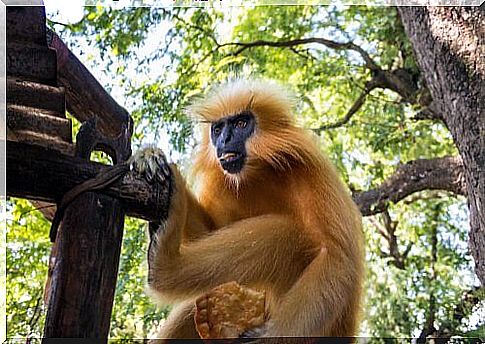Primates In China May Disappear

China’s primates could go extinct at the end of the 21st century. That’s the dire conclusion reached by a recent study of the twenty-five primate species that this country has.
China’s primates: scarce and varied
China is a country of enormous size and vast natural reserves, but population growth and industrial development threaten its enormous biodiversity. Of the 25 species of primates in China, between 18 and 15 have less than 3000 specimens.
This is particularly worrying, as primate species are varied in China. It is the second country in Asia with the greatest wealth of primates. Among the primates of China are the Gibbon and the Langur, to name just two of the best known.
During the 20th century many animals suffered declines in their censuses, something that China’s primates did not leave out.
The expansion of industrial livestock at the expense of extensive livestock, along with the development of infrastructure, has limited primate ecosystems in that country.

The gibbons, especially threatened
80% of Chinese primates are considered threatened, vulnerable or endangered. In the case of two species of gibbons, the white-cheeked and the white-handed gibbon, extinction in China has already occurred.
Orangutans were the only great apes, along with man, who lived in this vast eastern country. However, it has also disappeared, as the extinction of China’s primates is proceeding at an accelerated pace.
The gibbons extinction has a long history in China. As an example of this, we have the discovery of one of these animals in a real tomb. Currently, two species of black-crested gibbons have only a few dozen specimens, and their condition is considered critical.
More than half of China’s primate species do not reach 1,000 specimens, so they are on the brink of extinction. Among them, some species of slow lories and langurs stand out.

The future of China’s primates
The present doesn’t seem to bode well for primates in China, but one study has looked into the future of their populations.
Under the most optimistic scenarios, non-human primate populations will be halved in their distribution by the end of the century. However, in realistic settings virtually all of China’s loris, langurs and gibbons will disappear.
Still, some researchers are optimistic about some new Chinese policies. Conservation projects, such as the Hainan gibbon, appear to be slowly recovering the species, doubling in number in the past thirty years.
The Chinese government has started to create large nature reserves, and probably the best example of this is the fact that China plans a huge reserve for the giant panda.
The study authors advise the government to invest more in conserving the habitats of these primate species.
Among other things, the authors recommend investing in creating bridges of fauna, increasing scientific cooperation and demystifying the supposed benefits of oriental medicine, which also threaten the conservation of these animals.









